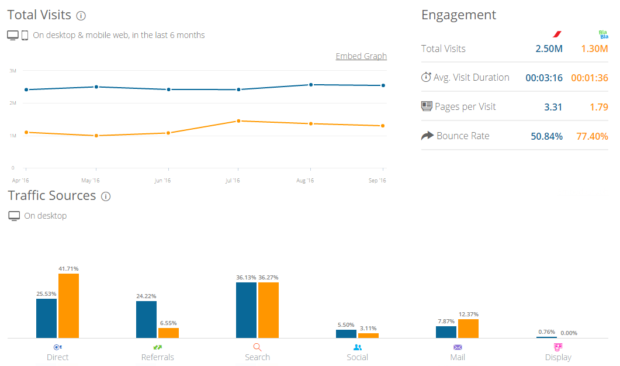Seasonal sales spikes can help you make or break your revenue goals – if you can keep up. Learn how to supercharge your seasonal sales strategy with these helpful tips.
Seasonal sales cycles are a double-edged sword: they’re more profitable than any other time of the year, but e-commerce platforms can only maximize them if agile enough to predict, and react to, the increased in-person and online traffic through your store. Yet optimizing your e-commerce platform during seasonal sales doesn’t have to be “Mission: Impossible”. There are tried and tested solutions to prepare your e-commerce platform to perform well and help your business succeed during these high-pressure times.

When preparing for seasonal sales, make sure you have a solid IT infrastructure to handle all the incoming traffic to your e-commerce platform. Do you need advice? Reach out to us!
Starting Off – Your E-commerce Platform Needs a Solid IT Infrastructure
Early preparation is key for success during seasonal sales. Since sales are now overwhelmingly done online, businesses have to focus on securing their technology infrastructures first. One big challenge is bearing large traffic loads. Load handling is like building a bridge: with the right support, large numbers of consumers and returning customers can comfortably travel across at once; with inadequate support, it will fail to do so, with dire consequences like lags and system crashes. The amount of traffic your website can support depends on how much, and how far in advance, you’ve prepared your IT infrastructure.
Learn more about how an e-commerce startup disrupted their industry
Running seasonal sales online is a 24/7 gig, where businesses choose, measure, and improve hourly each funnel conversion KPIs to bring on successively more customers than in the last hour. KPIs like Add to Cart, Cart to Checkout, Checkout rates, and Average Order Value are all measured and optimized with each customer in mind during this process. Preparation is key.
Phase 1: Preparation
Seasonal sales cycles are difficult, but without the right skills on staff, it’s impossible to manage them. Right before seasonal sales cycles, you need to update your IT infrastructure to make it available for the traffic spike expected for the holiday season. One way to do this is to set up auto-scale environments and add additional servers to let your businesses process large amounts of visitors to your sites. Another goal you should set up and work towards is making your e-commerce website with as few critical features as possible, making your intended user journey easier to follow, and improving loading time and UX—no frills and no unnecessary features!
That’s only the beginning.
Phase 2: Data-Driven Load Optimization
Once the first steps are complete, we recommend executing load tests—queries to your server equating to different traffic sizes in different scenarios. This ensures you’re fully prepared for any amount of traffic your eCommerce platform may receive. In the end, load testing provides you the insight to be able to know how much traffic you have, letting you know how much to improve the server infrastructure to handle certain amounts of visitors.
Phase 3: Data-Driven UX Optimization
After load testing and optimization, it’s important to make sure the website can be used to the standards realized in Phase 1 by adapting it to real-time ability to handle unexpected changes in the sales channels of your company. If this is not done, you will be unable to sell your inventory at a consistent rate. Yet if done, you will be able to sell inventory online through various channels, including redirects to different sales pages depending on customer needs.
Phase 4: Data-Driven Price Optimization
Be ready to increase or decrease your prices, promos, and bundles depending on your overall profit margins. Depending on how much your store has averaged net per season, you may need to scale up or down your prices based on what your target markets have shown you they are willing to pay. Reference pricing and comparisons to prior seasonal revenues before the season begins may be a good way to do this early. All in all, be sure to base your decisions on both your existing and real-time data.
#Takeaways
Executing these steps correctly enables your business to plan offers and create separate inventory according to each of your clients’ customer segments. Create, customize, and launch several online sales campaigns prior to and during the season. This allows your team to even further leverage your IT infrastructure to update your previous mobile, desktop, and laptop sales options to streamline UX and optimize overall functionality to ensure the timeliness of sales.
Failure can cause system collapses, mass traffic bounces, or even human liability as seen in Black Friday-style lethal customer stampedes every year. If a site fails, customers will visit its brick-and-mortar site in proportionally higher numbers in person than the online one to continue buying. Properly maintained, an e-Commerce company’s sales infrastructure can help predict, prepare for, and capably serve traffic loads of various sizes. Mismanaged, it will fail to do so, burning through customers and undermining its own long-term technical integrity, behind which actual security threats might follow.
Depending on your business, there are lots of different ways to secure your IT infrastructure to prepare for seasonal sales spikes or scale it up to accommodate larger volumes of traffic. Learn more about how Pentalog clients Missguided, Lengow and Coravin upgraded and scaled up their e-commerce platforms or get in touch with an e-commerce consultant to learn more about how to optimize your solution.
Read more:










